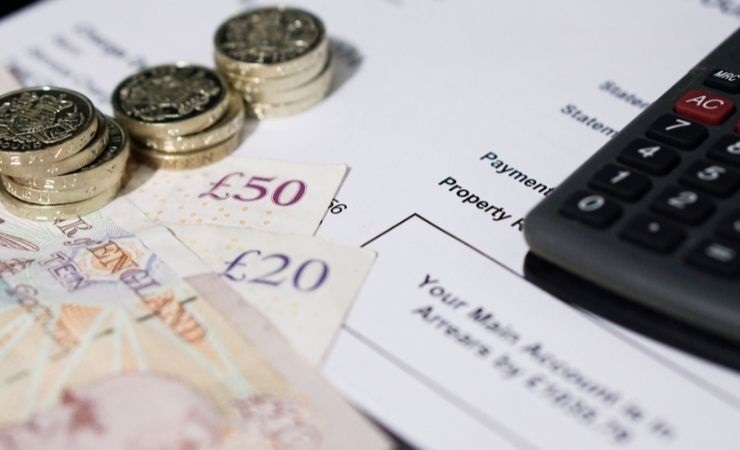In every business numbers matter. If you aren’t able to make enough profit then the business just isn’t worth your time. In many cases people start a business with a great idea but don’t know the numbers well enough to work out whether the business idea is worth pursuing.
Here we’re going to look at 11 key numbers that every business owner should know in order to build the business they want.
Your 11 Key Numbers are:
1. Leads
This number comes from the amount of potential customers your business is exposed to; it may be the number of website visitors, high street footfall, the number of homes that receive a flyer. There are many variations on how this number is reached depending on how your business model works. Essentially it is the number of leads at the top of your funnel.
2. Prospect Conversion (%)
This is the rate at which you convert your leads into someone who has expressed an interest in your product or service. For example, opted in to a mailing list or filled in an opt-in form on your website.
3. Prospects
Prospects are defined above.
The goal of a lead is to nurture it and convert the lead into a prospect.
What makes someone a prospect as opposed to a lead will differ between businesses. In our business, for instance, a lead becomes a prospect when they make a Discovery Call or create an account on our website. In other words, the lead is the very raw person who comes in at the top of your funnel. The prospect is when the next major event happens, such as a phone call or a meeting.
Using a high street shop, a café for example. A 1000 people walk down the high street every day (Leads), 100 people enter your café (prospects), giving a Prospect conversion rate of (100/1000) x 100 = 10%
4. Customer Conversion (%)
Not every prospect will become a customer. The rate at which prospects turn into customers is considered the Customer Conversion Rate; crucial for you because it defines how many prospects (and in turn how many leads) you need in order to hit your business goal.
Using our café example again, 100 people enter the café (Prospects), and 90 people buy something. Customer conversion rate of (90/100) x 100 = 90%
5. Number of Sales
This is probably the most straightforward number on the list. Essentially, it is the number of sales your business generates.
6. Average Order Value
Many business owners may think their average order value varies. In fact, there is always a definite average. The Average Order Value is the total value of all your sales (also known as Turnover, see 7 below), divided by the number of transactions.
Every business has varying transaction sizes. Nevertheless, every business has an Average Order Value and it is important to know it.
7. Turnover
Again, this one’s nice and easy. For the purposes of our data, this one’s simply a sum of the Number of Sales multiplied by the Average Order Value.
Advice about ‘rounding’. The numbers don’t have to be exact to the nearest penny, one business may work to the nearest £1,000 or might work to the nearest £100, there is no need to go to decimal places on this sheet.
This is about seeing the big picture.
8. Gross Profit
This is the amount of money you have left to fund your overheads, salaries and profit AFTER all your ‘direct costs’ have been paid.
The minute you get beyond break-even, your gross profit goes straight to the bottom line because all your fixed costs are covered.
Once you go beyond break-even with a business, you can do a lot more. Increase your marketing budget to attract more customers and grow your business.
9. Gross Profit Rate
Gross Profit is your turnover minus your costs of the goods sold. So if you bought a chocolate bar for 60p, sold it for £1, then your Gross profit would be £1 – £0.60 = £0.40. Gross Profit rate is simply stating this as a percentage, so (Gross profit / Turnover) x 100 = Gross Profit Rate
So in the example above with the chocolate bar, (£0.40/£1) x 100 = 40%
Essentially, this is the share of each sale that you get to retain in your business to contribute to your overheads and profits.
With this number, it is a good idea to get quite sophisticated, and add into the ‘costs’ all the money that is only ‘spent’ when sales are made. When you have your system implemented and your marketing returns are predictable, this would also include your marketing costs.
It would also include all sub-contracted costs that you only incur when you make a sale. So for example, if you had to pay delivery on the chocolate bars but only paid postage after a sale was made. If you pay 10p for delivery, then you’d include those costs in your Gross Profit Rate. In the example above, your Gross Profit Rate would come down to 30% because your costs are now 60p for the chocolate bar and 10p to deliver it (so 70p in total) from your £1.00 sale.
(Be careful here. If your courier is on payroll and you had to pay regardless of how many chocolate bars you sell, then his/her costs would be fixed and included in the overheads line below).
Once you’ve passed break-even point, your Gross Profit Rate is the amount your profit rises by each and every time you generate a sale. It’s that knowledge that can liberate your marketing when you understand it properly.
10. Overheads, including salaries
These are your fixed costs. In other words, all the costs you have to pay regardless of whether you sell one chocolate bar or 1,000 chocolates. This is where you’ll include all your rent, vehicle costs, utilities etc.
This figure would include all payroll costs UNLESS they only get paid when a sale is made, such as your courier in the example above. If they expect to get paid regardless of sales, then the cost goes in here.
11. Net Profit (before tax)
This is what’s actually left for you, after you’ve paid all your costs. Net profit is your Gross profit minus Overheads.
Putting it all together
The important thing about all these numbers is that they are all linked together.
For example, net profit + salaries + overheads = gross profit. Your gross profit is a margin of your total revenue.
The total turnover comes from the number of sales you make and the Average Order Value.
Your sales will come from prospects, which in turn come from leads. Everything is interconnected.
The key thing to understand is that all these numbers are directly linked together. Changing one of them affects them all.
In order for the System to work, you must be aware of and understand all of the 11 Key Numbers in your business plan.
Lastly,
to show how these numbers all tie together we’re going to ask you to think about what you would have in your ideal life. At this point, without thinking about the cost, just map out what your life would be like. Once it’s mapped out, start putting costings beside it.
Then you apply that cost to your business: i.e. this amount of net profit is required to fund my lifestyle.
Then we use the 11 Key Numbers to work backwards from the desired net profit figure to calculate the sales, the leads, the margins etc that are needed to deliver your goal.
Understanding these numbers and how they fit together to create a bigger picture of your business, is essential for working towards the business goal you want.







